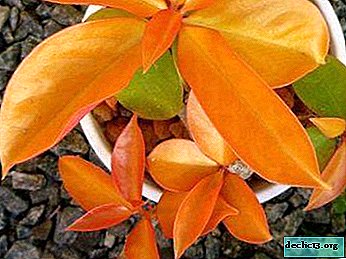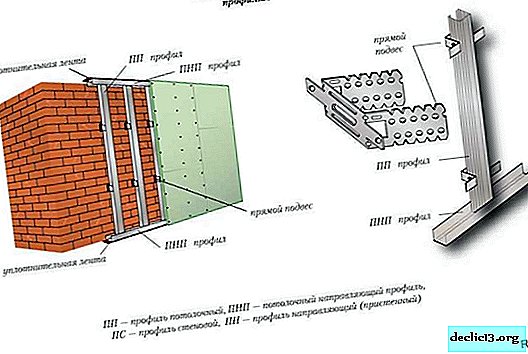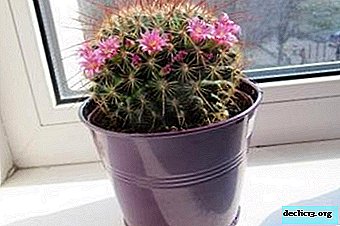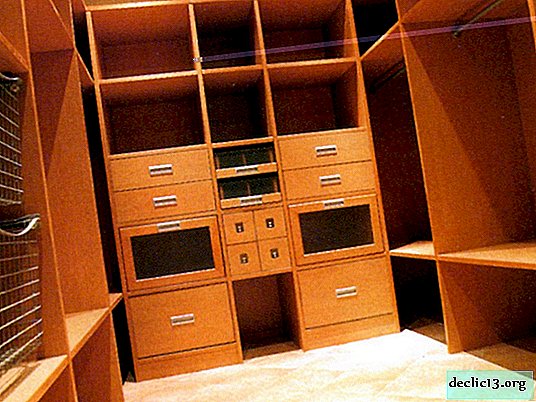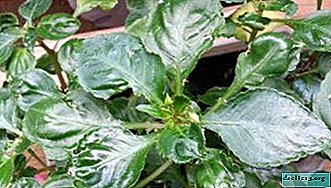We understand why geraniums have leaf diseases?
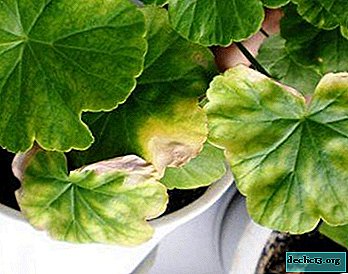
From ancient times to today, geranium has been one of the most beautiful and non-whimsical plants. It can be grown in the garden or on the windowsill, and fragrant leaves and plentiful, bright flowering leaves no one indifferent. Such a flower had previously rarely been ill, for which it became popular.
Now, the society of geranium lovers is actively discussing the types of diseases and methods of treatment. Some even have a specially prepared "green first aid kit." And it’s worth figuring out what geranium leaves can tell gardeners and how they can be cured at home. For greater convenience, the article provides photos of geranium leaves with all the diseases encountered.
Sometimes you may notice that your favorite plant continues to bloom, but its leaves become small, turn yellow over time, and then completely fall off. Often this process inevitably occurs in older instances that have not been updated for a long time. Also, green mass can fade for other reasons, namely:
- due to nitrogen starvation;
- low humidity in the room;
- high air temperature.
Photos of various problems
Check out the photo of the leaves and what the ailments of the plant look like.





What to do if they become small?
If you ask gardeners - what to do if geraniums have new small leaves that are not at all similar in size to the previous ones, then they will answer - in order to prevent the flower from losing its decorative properties, annual pruning should be performed (in late winter - early spring) or pinch its top. This will stimulate the growth of side shoots, as a result of which the plant will become fluffy. Do not be too lazy to transplant a pet with small leaves, choosing the right pot for her. BUT cropped stems can be rooted and a new geranium can be grown from them. You should also add foliar dressing, saturating the plant with nitrogen.
Important! When caring for geraniums, you should adhere to the rule of the "golden mean" - do not overdo it with fertilizers and watering.Excess moisture, frequent top dressing, inadequate air temperature and thickened plantings do not contribute to normal growth.
Why did they become few?
Experienced gardeners know that the plant takes on an unattractive appearance, not only due to illness, but also due to improper conditions of its maintenance. This is especially true of photophilous geraniums, which constantly strive for the sunny side. Eventually quite often the flower is pulled, and on the stems there remains an insignificant amount of leaves. Such a common phenomenon can be observed mainly in winter.
However, do not rush to throw the flower - it can still be saved. Just cut the bare shoots to the required height and place the flowerpot in a bright place, but not in direct sunlight. Do not forget to turn it periodically, then the bush will turn out even. But it also happens that the beloved geranium stops growing and new leaves do not appear in it. So why don't they grow?
To start carefully inspect the plant for insects, since invasions can inhibit the process of normal development. If it was not possible to detect pests, then the reason lies in the acidity of the soil and fertilizing.
How to solve the growth problem with top dressing and soil condition?
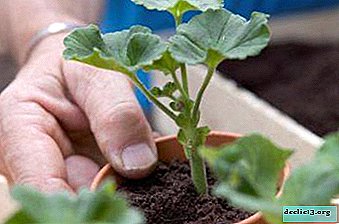 After making sure that your flower grows in a properly selected pot, is provided with drainage, receives the necessary amount of moisture, try replacing the soil. After all, geranium spends a lot of energy on growth and flowering, as a result of which resources quickly run out.
After making sure that your flower grows in a properly selected pot, is provided with drainage, receives the necessary amount of moisture, try replacing the soil. After all, geranium spends a lot of energy on growth and flowering, as a result of which resources quickly run out.- Spray the leaves of geranium with liquid fertilizers, without exceeding the allowable flow rates, which are indicated in the instructions for the preparations.
- It is recommended to choose top dressings with N-P-K 10-10-10.
- Also, once every two weeks, add fluids with potassium and phosphate. Favorable effect on the growth of green mass and water with droplets of iodine. Dilute 1 drop in a liter of water, draw 50 ml into a syringe and carefully pour the mixture over the walls of the pot, but be careful not to burn the roots. For the successful growth and development of the flower, only slightly acidic soil is required (approximately 6.5 pH).
Its useful to note, growth retardation can also provoke damage to the roots during transplantation. In this case, water the plant with “Kornevin” and carefully monitor the soil moisture.
Pest infection
Despite the fact that the fragrant smell of pelargonium repels insects, some species are still able to affect it. At the very beginning of the disease, the flower may look healthy, but its development will stop. So, geraniums do not grow in the presence of mealybugs. They accumulate in secluded places (in the axils of the leaves), feeding on green mass, including the stem.
Pests can significantly reduce the process of photosynthesis and use systemic insecticides to control them. Also inhibit the development of whitefly geraniums. Gently shake the plant and if a kind of white "dandruff" rises into the air, then it is time to use insecticidal preparations in combination with substances containing potassium soap.
Of course, geraniums may start dropping leaves due to a change of scenery (for example, if it was brought from the street or balcony to the room). But if at the same time the flowers fall, then this indicates a serious problem and it needs to be solved as soon as possible. We will understand why the geranium flowers fall and there are few leaves.
Why fall off?
 Flower lovers agree that for laying buds and their successful development, plants require moderate air temperatures and trace elements. For example, with a deficiency of boron, the flowers will begin to fade, not yet blooming, after which it is necessary to immediately dry up and help the oppressed specimen.
Flower lovers agree that for laying buds and their successful development, plants require moderate air temperatures and trace elements. For example, with a deficiency of boron, the flowers will begin to fade, not yet blooming, after which it is necessary to immediately dry up and help the oppressed specimen.
If you were unable to purchase special fertilizers, then you can do foliar top dressing yourself - Dilute 1 g of boric acid per liter of water and spray.
Boric acid contains 17% boron, while boron acid powder (14-16%) contains from 2.4 to 2.7% boron.
Attention! It is necessary to inspect the unopened buds for the presence of small holes that signal the defeat of the plant by caterpillars by bud-leaf buds.The insect larva makes tunnels and eats the plant from the inside. You can also notice its excrement in the form of brown specks.
Collect the caterpillars with your hands, and treat the surface of the buds with a bacterial spraybeing a biological weapon against pests. After a few hours, the "enemy" will stop eating and die within 1-2 days.
It is also worth paying attention to the condition of the roots, since their drying out or excessive waterlogging will result from the falling of geranium flowers. It is not recommended to rearrange the flowerpot to another place after the buds have formed.
In this video, we will consider what to do if the geranium has dropped its leaves:
Other questions
Of course, the main problems in growing geraniums are improper care, but it is still susceptible to some bacterial diseases. Most of all gardeners should beware of blackened leaves, followed by death. It turns out that such a process can be caused by a bacterial burn and the disease is called gummosis. Its pathogen (Xanthomonas campestris) is able to spread with infected cuttings and progressively develop in conditions of high humidity and high temperature.
The main symptoms of the disease:
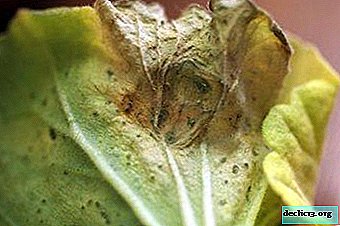 small wet spots of a circular shape on the underside of the leaf (about why spots appear on the leaves of geranium, read here);
small wet spots of a circular shape on the underside of the leaf (about why spots appear on the leaves of geranium, read here);- subsequent transformation of spots into lesions of an angular shape in black or dark brown;
- solid damage to the touch;
- rapid spread of infection down the stem, after which it turns black;
- black, but not rotten roots.
As a result, only the top of the plant remains green, however, it is absolutely not suitable for cuttings, since the cut shoots are also infected and do not root. Withering geraniums with blackening leaves and a stem, can lead to its death (what to do if the geranium in the pot withers and why this happens, you can find out here). However, infections are not amenable to treatment and experts advise destroying the flower to prevent infection of healthy crops.
As a preventive measure, it is necessary to disinfect the tools that are used for grafting, to provide the plant with moderate watering, drainage and good lighting. Do not forget to take the geranium out onto the street, balcony or ventilate the room as often as possible.
It is quite easy to fulfill all the care requirements, and the result will not only please the eye with plentiful flowering, but also allow gardeners to create a special atmosphere in the house, filled with aromatic essential oils contained in the leaves of the plant.

 After making sure that your flower grows in a properly selected pot, is provided with drainage, receives the necessary amount of moisture, try replacing the soil. After all, geranium spends a lot of energy on growth and flowering, as a result of which resources quickly run out.
After making sure that your flower grows in a properly selected pot, is provided with drainage, receives the necessary amount of moisture, try replacing the soil. After all, geranium spends a lot of energy on growth and flowering, as a result of which resources quickly run out. small wet spots of a circular shape on the underside of the leaf (about why spots appear on the leaves of geranium, read here);
small wet spots of a circular shape on the underside of the leaf (about why spots appear on the leaves of geranium, read here);